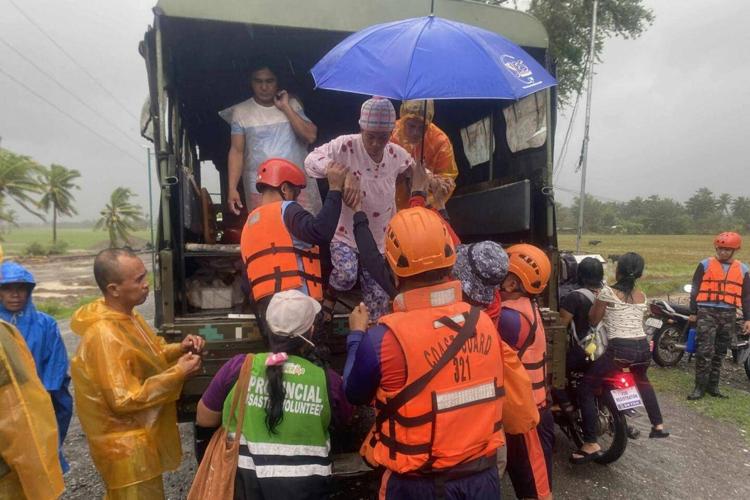Typhoon Fung-wong has swept through the northwestern Philippines, resulting in at least eight fatalities and displacing over 1.4 million individuals. The storm, which made landfall on Sunday night, has caused significant flooding and landslides while knocking out power across entire provinces. After wreaking havoc in the Philippines, Fung-wong is expected to continue its path northwest toward Taiwan.
The typhoon hit northeastern Aurora province as a super typhoon, featuring sustained winds of up to 185 kph (115 mph) and gusts reaching 230 kph (143 mph). This extensive storm, measuring approximately 1,800 kilometers (1,100 miles) wide, weakened slightly as it traversed mountainous regions and agricultural plains. By Monday, it had moved from La Union into the South China Sea, according to the Philippine Atmospheric, Geophysical and Astronomical Services Administration (PAGASA).
Tragic accounts have emerged from affected areas. In the eastern province of Catanduanes, one person drowned in flash floods. In Catbalogan city, another individual died when a house collapsed due to the storm’s impact. In the northern province of Nueva Vizcaya, three children were killed in two separate landslides, while four others sustained injuries. An elderly person lost their life in a mudslide in Barlig, a town in the Mountain Province. Additionally, a landslide in Lubuagan town, located in Kalinga province, resulted in two fatalities and left two others missing.
As the storm made landfall, over 1.4 million people evacuated to emergency shelters or the homes of relatives, with around 318,000 remaining in evacuation centers as of Monday. The storm’s fierce winds and heavy rains led to flooding in at least 132 northern villages, leaving some residents stranded on their roofs as floodwaters surged. Reports indicate that approximately 1,000 homes were damaged, and road access was disrupted by landslides.
Bernardo Rafaelito Alejandro IV, head of the Office of Civil Defense, emphasized the ongoing danger posed by the storm’s residual rains. “While the typhoon has passed, its rains still pose a danger in certain areas,” he stated, highlighting concerns particularly in northern Luzon, including the metropolitan Manila area. Alejandro noted that rescue, relief, and disaster-response operations would commence as conditions improved.
In response to the escalating crisis, Philippine President Ferdinand Marcos Jr. declared a state of emergency on March 27, 2023, due to the widespread destruction caused by Typhoon Kalmaegi, which had previously left at least 224 people dead. The government also anticipated further damage from Fung-wong, referred to as Uwan in the Philippines. The country has not yet requested international assistance, although both the United States and Japan have expressed readiness to help.
Schools and most government offices have been closed, and travel was severely affected. Over 325 domestic and 61 international flights were canceled, while more than 6,600 commuters and cargo workers found themselves stranded in ports due to the coast guard’s restrictions on maritime travel amid rough seas.
The Philippines is particularly vulnerable to natural disasters, with approximately 20 typhoons and storms hitting the archipelago annually. The nation also experiences frequent earthquakes and is home to more than a dozen active volcanoes, contributing to its reputation as one of the world’s most disaster-prone countries.
